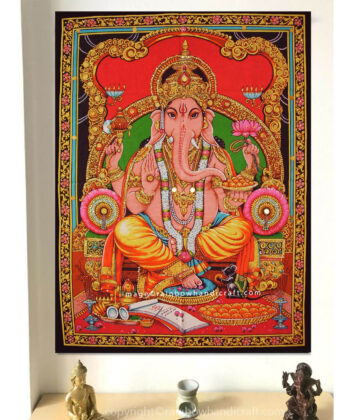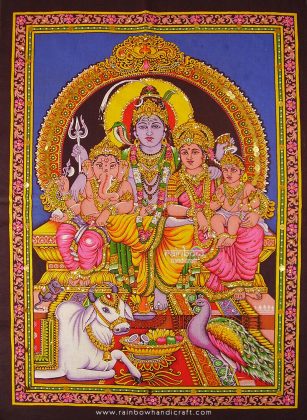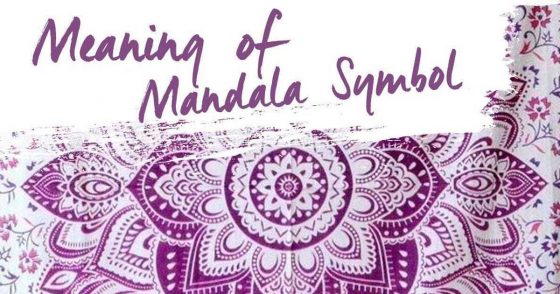Decor with Hindu Tapestry :
Hinduism is a religion with a rich history and culture, and the worship of gods and goddesses is a central part of the faith. One way to honor and pay tribute to these deities is through the use of tapestries or wall hangings featuring their images.
These tapestries and wall hangings can be made from a variety of materials, including cotton, silk, and polyester. They often feature intricate designs and bright colors, and can range in size from small pieces to large wall hangings.
One of the most popular deities featured in these tapestries is Lord Ganesha, the elephant-headed god who is considered the remover of obstacles and the god of new beginnings. His image is often used to bless new ventures and homes. Another popular deity is Lord Shiva, the god of destruction and regeneration, who is often depicted with his wife, Parvati, and their sons, Ganesha and Kartikeya.
Goddesses are also commonly featured in Hindu tapestries and wall hangings. The goddess Lakshmi, who is associated with wealth and prosperity, is often depicted with lotus flowers and gold coins. The goddess Sarasvati, who is associated with knowledge and learning, is often depicted with a veena (a musical instrument) and a book.
In addition to their religious significance, these tapestries and wall hangings can also add a beautiful and unique touch to any home decor. They can be hung on walls, draped over furniture, or used as bedspreads. Some people even use them as curtains or room dividers.
When choosing a décor with Hindu god tapestry or wall hanging, it’s important to consider the size and color scheme of the piece, as well as the deity being depicted. It’s also important to ensure that the image is respectful and accurately represents the deity.
Overall, Hindu god and goddess tapestries and wall hangings are a beautiful and meaningful way to honor and celebrate the rich traditions and culture of Hinduism.
More Varieties On Our Amazon Store As Well !





